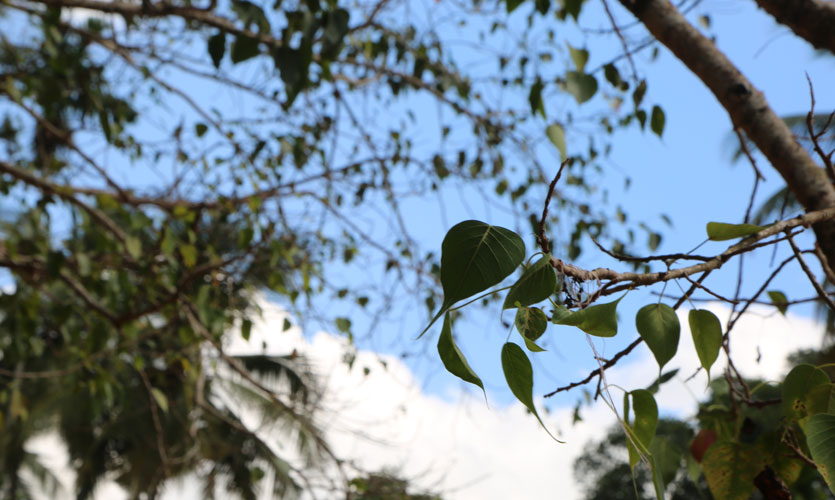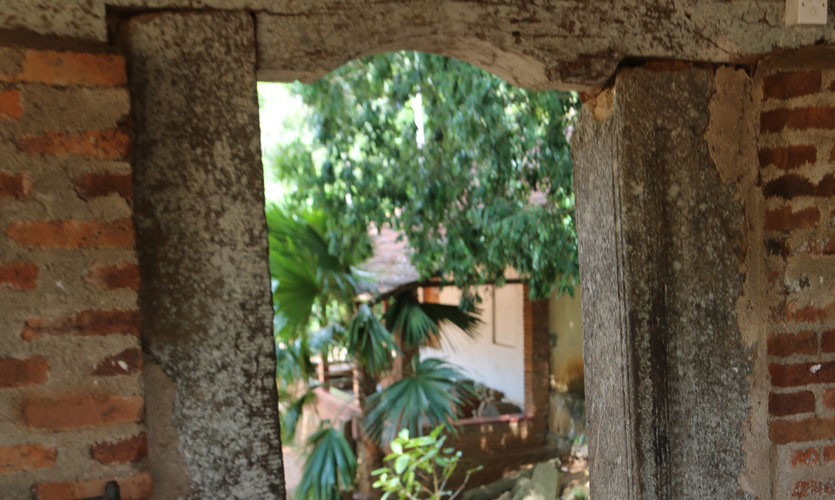Sep 01 2017.
views 5103Sri Lanka is a country rich with tales of victory and defeat dating back to the times of the ancient kingdoms. As a country that is home to nine such kingdoms which introduced various religious establishments and cultural heritage, we have much to boast about. This was quite evident during our visit to Yapahuwa. Following our first episode, we then visited the Kingdom of Dambadeniya which was ruled by the great King Parakramabahu II among others.

Situated in the North Western or Wayamba province of Sri Lanka along the Kurunegala-Negombo road, the Dambadeniya Kingdom once served as the capital of Sri Lanka during the mid-13th century. With the assistance of A.M Wijepala, a representative from the Department of Archaeology and area correspondent Sajeewa Kottagoda, we began to explore this ancient royal kingdom

History
Back in 1232 A.D the reign of the Dambadeniya Kingdom was vested on the hands of King Vijayabahu III who succeeded the rather ferocious Kalinga Maaga. Upon discovering the beauty of the city, the King revamped it in to a prosperous city. Apart from being a great leader, King Vijayabahu III was a man of wisdom, a literary scholar and an ardent Buddhist whose contribution to the Sasana was quite influential. He then moved on to construct temples and protect Buddhism and relics from foreign invaders. His sons Parakramabahu and Buvanekabahu were responsible for protecting the Sacred Tooth Relic and taking over the powers of the Kingdom with lessons from the Bhikkus. With the demise of King Vijayabahu III, King Parakramabahu II succeeded the throne. Also known for his scholarly skills, the King was the author of many Buddhist scripts including Kausilumina, Vanavisi Sannaya and Visuddhi Marga Sannaya.

The sons of Parakramabahu II, Vijayabahu, Buvanekabahu, Thilokamalla, Parakramabahu and Jayabahu were advised to rule the kingdom with unity. Hence Vijayabahu won the hearts of its people and succeeded his father who stepped down after 22 years of reigning over the Kingdom. He was the pioneer of the Vijayasundararama temple which once housed the Sacred Tooth Relic. Upon taking the leadership, Vijayabahu directed Thilokamalla and Buvanekabahu to oversee the South of the land from Dambadeniya and Yapahuwa respectively. King Vijayabahu was a pioneer in revamping ruined cities into beautiful attractions and legend has it that on his way back from Sri Pada, the King constructed temples in Gampola and Kurunegala as well. 53 years after, King Parakramabahu passed away and in turn King Vijayabahu could only reign for two more years. Following his demise the Dambadeniya Kingdom fell in to the hands of Aarya invaders who robbed the Sacred Tooth Relic and Dambadeniya and Yapahuwa Kingdoms thus fell apart.
Historical landmarks
Vijayasundararama Temple

Our first stop in Dambadeniya was at the Vijayasundararama Temple which was constructed by King Vijayabahu. Legend has it that the Tooth Relic chamber which sits in the middle of the premises once had three tiers but today only one of them could be seen. It is believed that this construction would have been built during the Kandyan era since most of its paintings have a close resemblance to that era. Certain other paintings have a resemblance to the Dambadeniya period as well. Today, paintings of the chief male disciples Sariputta and Moggallana along with other religious stories could be seen. Meegasthanna Adikaram was instrumental in refurbishing this construction and his painting is also visible among the paintings. On to the left of this construction is the Vatadageya which also has a similar appearance to that of the Chamber. Legend has it that the Tooth Relic would have been exhibited in this building complex, also during the Dambadeniya period.
Maliga Gala (Palace Rock)

As the name suggests, the Palace of the reigning kings were built on top of this rock. We commenced the ascent, hoping that it wouldn’t be as bad as that of Yapahuwa but it did become steeper on the way. While on our way to witness the remains of the majestic palace complex, we discovered some interesting facts about the staircase itself. In one place it took the shape of a bottleneck, which has been one way in which the rulers tricked invaders. The passage is small enough for just one person to pass through and the staircase once again expanded with steps broader in length and steeper in height. Hence, the defence strategies executed by the then rulers are beyond imagination. As we climbed higher, we caught a glimpse of a wall which protected the courtyard. Today one could clearly see the remains of the courtyard around which the majestic palace would have once existed. Several ponds too exist in the vicinity, one named ‘Ranmal Pokuna’ and the other as ‘Maa Vee Pokuna’.

Palace

Although the remains of the palace could be seen today, it is quite evident that the palace complex spanned across a vast area of land. Several remains of buildings which surrounded the palace also could be seen. It is believed that the previously mentioned ponds would have supplied water uphill. In addition to that we also learned that water from the 24 feet deep Maa Vee Pokuna was used only for drinking purposes. Hence it was also protected with a roof back in the day.
Waduwa Ketu Gala

This is a famous rock and a must-visit sight when in Dambadeniya. Legend has it that back in the day, when Polonnaruwa was under the threat of being invaded by the South Indians, the King took great efforts to protect the Tooth Relic. One of his ideas was to imprison the chief craftsman who constructed the Tooth Relic chamber. Therefore he built a prison on top of a dome-shaped rock and placed royal guards on one side of the rock so that nobody could enter or exit. Daily the wife of this craftsman would bring him meals which were sent uphill with the aid of a rope. Somehow, the wife was able to smuggle the toolkit he used to carve rocks. The other side of the rock had a sheer drop and the craftsman started carving out huge steps one by one hoping to elope one day. With the help of his wife, the craftsman was able to escape from the King and the soldiers. Hence the rock was named ‘Waduwa Ketu Gala’ or in other words the ‘Rock Carved by a Craftsman.’
Interesting fact : While on our way back from a rather tedious climb uphill we also saw several moulds which were used to make coins. During the Dambadeniya period, the ore was put in to these moulds and were pressed upon heating. Once pressed the relevant carvings were done. One significant feature about these coins is that they had had no particular shape.

3 Comments
Deva Wanigasekera (Ph.D. Chemistry) , Saskatchewan says:
Sep 02, 2017 at 01:42 amDambadeniya & Yapahuwa historic review, accompanied by professional photography have been presented elegantly by Kamanthi. I enjoyed reading it. I have never visited this historic site, but on my next visit to Sri Lanka this site would be my priority. Thank you for all your efforts Kamanthi. Deva Wanigasekera (Ph.D.)
Samagi says:
Sep 04, 2017 at 10:31 pmI loved the segment, except the historical inaccuracy of referring to the country at the time as "Ceylon". Back then it was very much called Lanka, as it had been for millenia.
J.M.A.C. Jayasinghe says:
Sep 06, 2017 at 10:21 amThe article about Damabadeniya Kingdom is very good and appreciated. I would wish to contact the author via e- mail for my views on unwritten history of Dambadeniya and sorroundings.